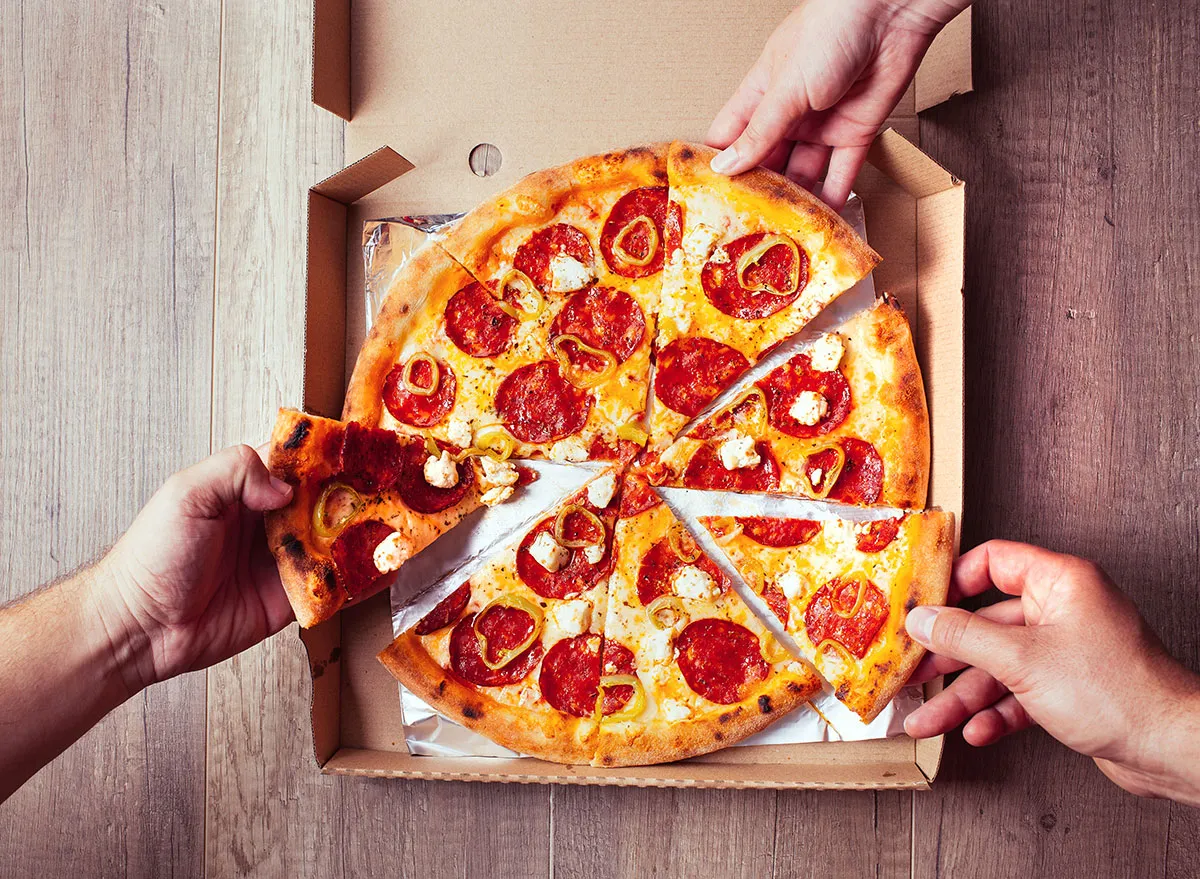Is Pizza Healthy? A Registered Dietitian Reveals the Truth About Your Favorite Food

Pizza often doesn’t come to mind when you think of healthy foods. Why? With quick-service restaurants and sit-down restaurants alike serving pizzas doused in crumbles of sausage, slices of pepperoni, and extra layers of cheese, it’s no wonder why the Italian dish gets a bad reputation. Would a thin crust pizza with fine slices of prosciutto, spinach, and caramelized onions sprinkled with feta and oregano fall under that same category? How about a pizza crust that’s made predominantly from almond flour?
Maryann Walsh, MFN, RD, CDE lends insight on what components make a pizza healthy and which ones don’t.
Generally speaking, is pizza is a healthy meal option?
“Pizza can absolutely serve as a healthy meal option and fit into a healthy lifestyle, even into a weight loss plan,” says Walsh. “It all comes down to the type of pizza and portion sizes as well as what your individual nutrition goals are.”
Remember, pizza offers a dose of all of the macronutrients—the crust contains carbohydrates while the cheese provides both fat and protein. Now if you eat three slices of a meat-heavy pie, that’s where the problem arises. Too much of either macronutrient will ultimately store as excess fat if not burned off through adequate exercise. Of course, the quality of ingredients used is also a factor. It’s best if you make the pizza at home, that way no added oils or teaspoons of salt are added into the mix.
How can you make a healthy pizza at home? What toppings should you put on it?
There isn’t just one answer.
“To cut back on calories from excess carbohydrates, you can elect to make a thin-crust pizza. You still get the same overall experience of eating pizza, there’s just less bread [which means] fewer calories and carbohydrates,” says Walsh.
Regardless of whether the crust is thin or thick, portion control should still be followed and Walsh offers a few ways you can add more nutrients to your meal.
“A great way to control your portion while still creating a full meal during a pizza night is to serve the pizza with a side salad or some non-starchy veggies like asparagus, green beans, zucchini or spinach to balance out the carbs in the pizza,” she says. “As far as cheese goes, some prefer to use full-fat cheese and put less on their pizza, while others like a pizza loaded with cheese. For them, it might make sense to use a reduced-fat cheese product to cut back on overall calories.”
Using less of a full-fat cheese will keep you fuller longer, so consider that as you peruse the grocery store or farmers market. Other healthful toppings include antibiotic-free, free-range chicken as well as vegetables including bell pepper, onion, and even mushrooms. As for the crust, you’ve got a few options.
“Flatout flatbreads are a popular product for making a personal pizza at home and tortillas can also make for a convenient thin crust pizza,” says Walsh. “Companies like Outer Aisle Gourmet also make great ready-made cauliflower crusts.”
Is cauliflower crust more nutritious than flour-based pizza crust?
“Cauliflower crust is all the rage for good reason—it’s typically low in carbs and is a great substitute for real wheat flour crust,” she says. “Many following a low carb or keto diet choose to go this route. In terms of carbs and calories, you will save a significant amount compared to a wheat flour version, however, in terms of nutrition, the wheat flour version will have more fiber and is also usually fortified with iron.”
Of course, some companies pack extra starch into their cauliflower crusts, which increases the carb content. Make sure to read the label before purchasing if you’re following a low-carb diet. Cali’flour Foods plain cauliflower crust is a smart choice because it only includes three ingredients: fresh cauliflower, mozzarella, and egg whites. Not to mention, one serving only costs you 90 calories and 2 grams of carbs.
So yes, pizza can be a healthy meal, it just depends on what ingredients you use and how much of it you consume in one sitting. Moderation and balance are always the key!